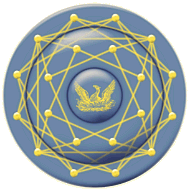The Weapon Of The Future Blows Something Up and Why not the best?
Two items on the ALT (Airborne Laser Testbed) absolutly the most important weapons system ever envisioned. First from Strategypage a description of the mechanics of the ALT test shots. Laser weapon systems are critical to the security of the US.
FROM STRATEGYPAGE.COM:
The Weapon Of The Future Blows Something Up
February 16, 2010: For the first time, after a decade of development, the U.S. Air Force fired its ALT (Airborne Laser Testbed) laser while in flight and hit a rapidly (1,800 meters a second) rising ballistic missile. The laser beam took several seconds to weaken the missile structure, and cause it to come apart. This test came only eight months after the smaller Advanced Tactical Laser (ATL) was fired in flight for the first time. The target was some lumber on the ground, which was hit. The ATL weapon was carried in a C-130H four engine transport.
Five years ago, manufacturers of combat lasers believed these weapons were only a few years away from battlefield use. To that end, Northrop-Grumman set up a new divisions to develop and build battle lasers. This optimism was caused by two successful tests six years ago. In one, a solid state laser shot down a mortar round. In another, a much more powerful chemical laser, hit a missile type target. Neither of these tests led to any useable weapons, and the combat laser remains the "weapon of the future." It hasn't worked out that way.
Solid state lasers have been around since the 1950s, and chemical lasers first appeared in the 1970s. The chemical laser has the advantage of using a chemical reaction to create the megawatt level of energy for a laser that can penetrate the body of a ballistic missile that is still rising in the air hundreds of kilometers away. The chemical reaction uses atomized liquid hydrogen peroxide and potassium hydroxide and chlorine gas to form an ionized form of oxygen known as singlet delta oxygen (SDO). This, in turn is rapidly mixed with molecular iodine gas to form ionized iodine gas. At that point, the ionized iodine gas rapidly returns to its resting state, and while doing so releases photons pulsing at the right frequency to create the laser light. These photons are channeled by mirrors and sent on their way to the target (which is being tracked and pinpointed by other lasers). The airborne laser weighs about six tons. It can be carried in a C-130H, producing a laser powerful enough to hit airborne or ground targets fifteen kilometers away. The laser exists via a targeting turret under the nose of the aircraft. The laser beam is invisible to the human eye. The chemicals are mixed at high speeds, and the byproducts are harmless heat, potassium salt, water, and oxygen. A similar laser, flying in a larger aircraft (B-747) is to have enough range to knock down ballistic missiles as they take off. This is what was used in the recent test.
Nearly half a century of engineering work has produced thousands of improvements, and a few breakthroughs, in making the lasers more powerful, accurate and lethal. More efficient energy storage has made it possible to use lighter, shorter range ground based lasers effective against smaller targets like mortar shells and short-range rockets. Northrops move was an indication that the company felt confident enough to gamble its own money, instead of what they get for government research contracts, to produce useful laser weapons. A larger high energy airborne laser would not only be useful against ballistic missiles. Enemy aircraft and space satellites would also be at risk. But companies like Northrop and Boeing are still trying to produce ground and airborne lasers that can successfully operate under combat conditions. The big problem with anti-missile airborne lasers is the power supply. Lots of chemicals are needed to generate sufficient power for a laser that can reach out for hundreds of kilometers and do sufficient damage to a ballistic missile. To be effective, the airborne laser needs sufficient power to get off several shots. So far, no one has been able to produce such a weapon. That's why these lasers remain "the weapon of the future," and will probably remain so for a while.
Secondly from Frank Gaffney at the Jewish World Review; his take on the political, strategic and tactical aspects of the ALT system.
FROM THE JEWISHWORLDREVIEW.COM:
Feb. 16, 2010 / 2 Adar 5770
Why not the best?
By Frank J. Gaffney, Jr.
For years, presidents of both parties have pledged to ensure that America fields a military second to none. A successful test last week of a truly transformative technology affords Barack Obama an opportunity to help make that pledge a reality. Unless Mr. Obama swiftly orders the Pentagon to change course on the remarkable Airborne Laser Test Bed (ALTB) program, however, his legacy on defense preparedness will be one of empty rhetoric and increased danger for our country.
The Airborne Laser program is a direct descendent of Ronald Reagan's visionary Strategic Defense Initiative (SDI), with its exploration of various means of intercepting and destroying ballistic missiles - including lasers and other "directed energy" techniques. Given the state of the art at the time, critics scoffed at the idea that these exotic, speed-of-light weapons could ever be made to work. The late Sen. Edward Kennedy exemplified this view when he dismissively dubbed the SDI program "Star Wars."
Today, however, it is the critics who look ridiculously shortsighted. Thanks to two decades of intensive research and development and an investment of roughly $5 billion, America's aerospace industry has achieved an extraordinary feat of science and engineering. They have successfully married a Boeing 747 airframe with three chemical lasers: a low-power system used for tracking a missile early in its flight; a second, low-energy laser that measures and calculates adjustments needed to compensate for atmospheric conditions; and a third, megawatt-class high energy laser that uses the others' data to destroy the missile by using its heat to induce structural failure.
The ALTB successfully performed this feat not once but twice on February 11, taking out first a short-range liquid-fueled missile and then a solid-fueled one representative of the sorts of threats emerging notably from North Korea and Iran. Importantly, these intercepts took place during the boost-phase - a capability that means the missile and its deadly payload could be destroyed over the territory of a would-be attacker. That potentially devastating prospect may serve as a further disincentive to a hostile power's launching the missile in the first place.
READ IT ALL:


.jpg)
















